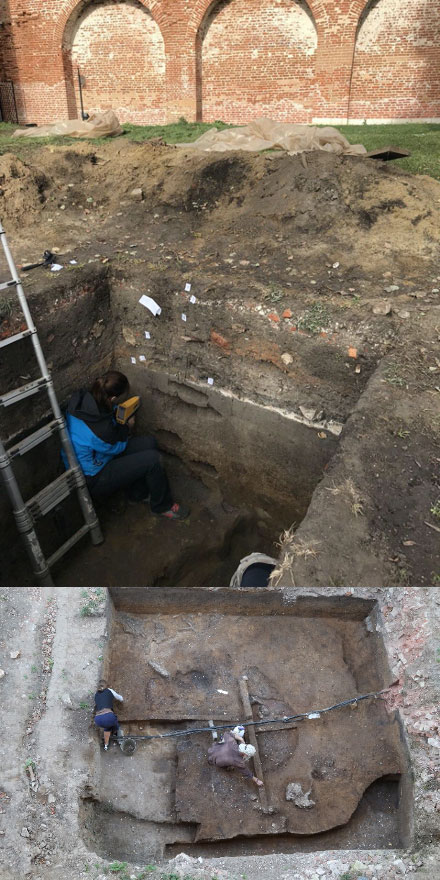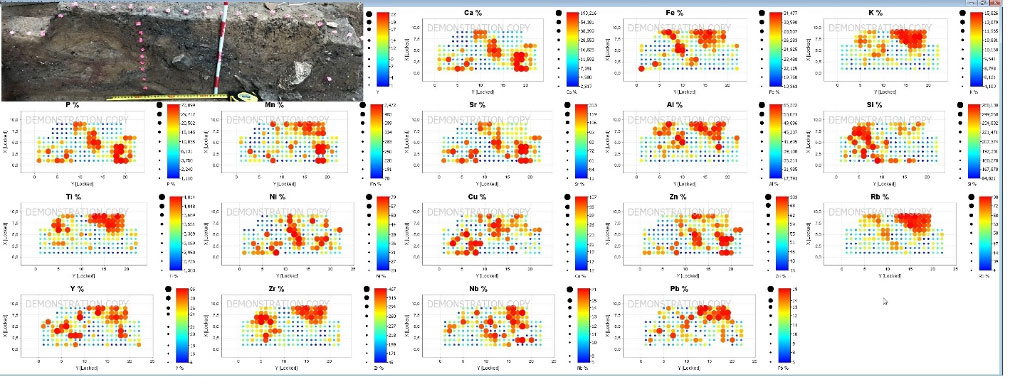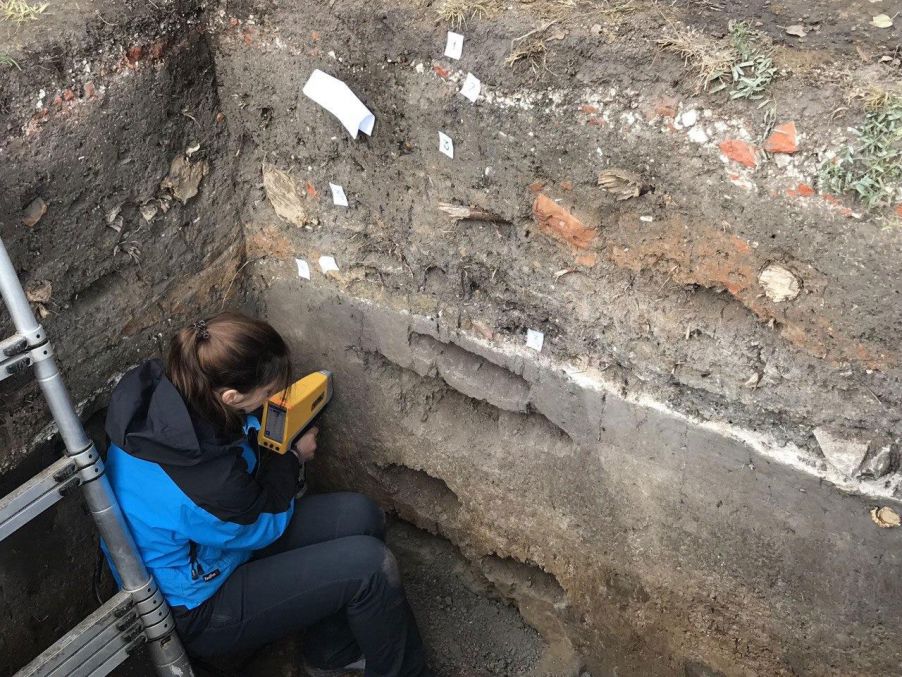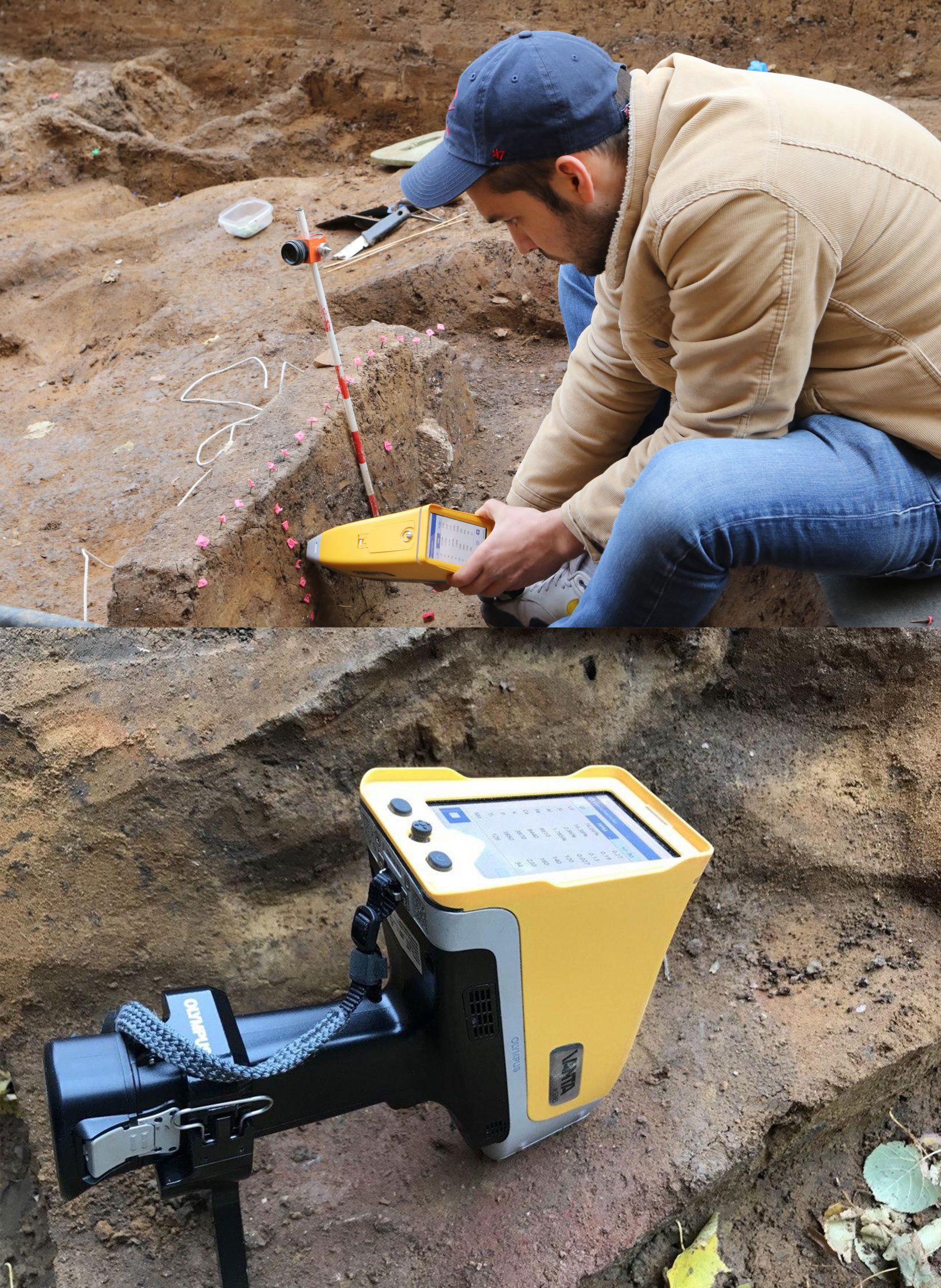A recent study using Vanta™ portable XRF analyzers (pXRF) on layers of soil indicates ancient human impact on landscape development and climate/environmental conditions dating back to the Upper Paleolithic (Late Stone Age) and medieval times in central Russia.
We chatted with researcher Tatiana Romanis, who authored a paper on the soil analysis study, to learn more about the project. She was joined by researchers Sergey Sedov, Sergey Lev, Marina Lebedeva, Kirill Kondrateve, Anna Yudina, Konstantin Abrosimov, Alexandra Golyeva, and Dmitry Volkov.
She shares details on their goals, results, and why they chose the Vanta pXRF analyzer and other Olympus equipment for the project.
A researcher tests soil using a Vanta portable XRF analyzer
Why did you select the Vanta XRF analyzer for this study, and how did it fit into your research process?
Only the portable XRF analyzer made it possible to meet the expedition's goals without laboratory experiments while preserving the artifacts. We chose the Vanta analyzer because of its key benefits: nondestructive, portable, and high-quality results.
In this project, we studied the paleosols of an Upper Paleolithic site in Zaraysk Kremlin. When working at archaeological sites, the main challenge is the limited volume of samples for laboratory analysis.
The Zaraysk paleosol is difficult to analyze because it is developed in an archaeological and cultural layer that contained many artifacts. For example, archaeologist Sergey Lev described more than 1,300 flint artifacts recovered from one cultural layer in a small 4 square meters area.
In this case, the first goal was to select samples for studying the most typical features of the soil horizons. The second goal was to describe sharp or diffuse boundaries in layers based on the chemical element distribution. Finally, the third goal was to distinguish two groups of chemical elements based on their distribution within the studied soil profile to separate evidence of eluvial-illuvial soil processes and evidence of human impact.

Did the pXRF data meet your expectations?
We have used spectrometry for in-field, nondestructive investigation of pedogenesis. pXRF shows high results in measurement concentrations of copper (Cu), zinc (Zn), phosphorus (P), calcium (Ca), sulfur (S), titanium (Ti), iron (Fe), aluminum (Al), and magnesium (Mg). The concentration of these elements, as expected, changed under the influence of the pedogenic process or anthropogenic impact.

The researchers’ pXRF elemental analysis data for the soil analysis study
What went well in the study, and what didn’t go as well?
It took much more time to measure the concentrations of elements than we expected. For this type of research, it is necessary to account for additional days. But it is worth it if there is a shortage of material for sampling.
Were you surprised by the pXRF results?
We did not expect field XRF results for some elements to be comparable to laboratory methods. The results exceeded all expectations.
Will you use pXRF analysis for other projects in the future?
We want to systematically use a Vanta analyzer in palaeoecological research soils buried at archaeological sites. We can get more information in field research without object destruction.
What are some important challenges you faced in your research?
The high heterogeneity of the studied archaeological soils and cultural layers, and the limited sampling possibilities that require bringing the necessary analytical techniques to the field.
Aside from pXRF, what other equipment did you use to solve these challenges?
We have an Olympus BX51 polarizing microscope with an Olympus DP26 digital microscope camera for thin-section analysis for research and visualization of soil microstructure.
How will our microscope imaging systems contribute to your research in the future?
Morphometric image analysis to quantify microscopic anthropogenic particles and the features of soil-forming processes to generate a record of ancient human impact and environmental changes at the microscopic scale.
Learn More About Olympus pXRF and Microscopes for Soil Analysis
To learn more about the role of our pXRF and microscope instruments in this soil analysis study, read the paper here.
Related Content
Brochure: Vanta for Environmental Applications
A Monumental Discovery—XRF Sheds Light on the Origins of Stonehenge
Soil Analysis Discovery Combines Handheld XRF and Vis-NIR Data



.jpg?rev=A3A1)